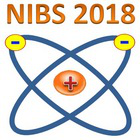Speaker
Mr
Roman Lapin
(Institute of Applied Physics of Russian Academy of Sciences)
Description
H^- ion sources are needed in various areas of nowadays physics, such as for beam injection into cyclotrons and storage rings and for plasma heating in experimental facilities studying the possibility of thermonuclear fusion. According to the recently proven fact that gasdynamic ECR ion source based on ECR discharge in a simple mirror trap could be very efficient for proton beam production, we use that gasdynamic plasma source at the first stage of volumetric ion production through dissociative electron attachment. Experiments were performed with 37 GHz, up to 100 kW gyrotron radiation in a dual-trap magnetic system, which consists of two equal simple mirror traps. The first trap was used for plasma production under ECR conditions with parameters listed above. Dense hydrogen plasma flux from the first trap was allowed to flow into the second trap through a perforated plate, which prevented propagation of heating microwaves into the second one. That helps to separate "hot" and "cold" electrons generation areas. In the current work we present the recent experimental results on this topic. The significant difference compared with previous experiments is preliminary cleaning the chambers with a warm-up and a long pumping out. We achieved the negative ion current density on the level of 80 mA/cm^2 with the 1 mm aperture of plasma electrode.
Primary author
Mr
Roman Lapin
(Institute of Applied Physics of Russian Academy of Sciences)
Co-authors
Mr
Ivan Izotov
(Institute of Applied Physics of Russian Academy of Sciences)
Dr
Olli Tarvainen
(STFC Rutherford Appleton Laboratory)
Mr
Roman Shaposhnikov
(Institute of Applied Physics of Russian Academy of Sciences)
Mr
Sergey Razin
(Institute of Applied Physics of Russian Academy of Sciences)
Dr
Vadim Skalyga
(Institute of Applied Physics of Russian Academy of Sciences)

